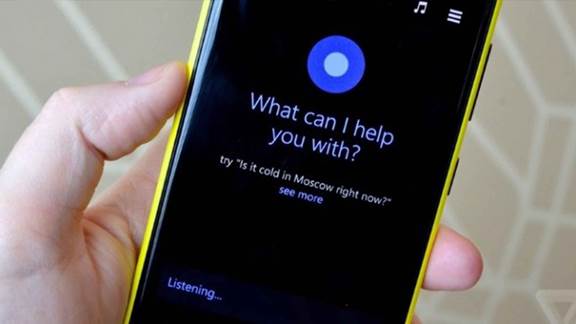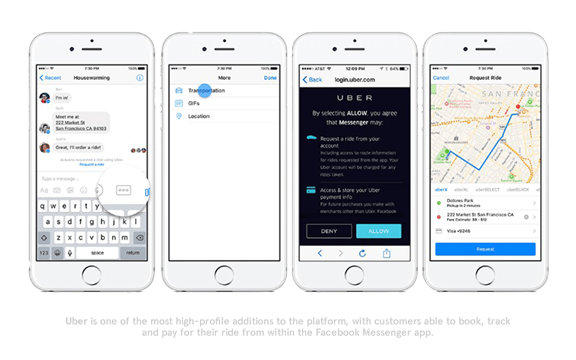Facebook is also rumoured to have built a chat SDK that will open up the platform and enable businesses to automate messaging users, with the goal of making Facebook Messenger a hub for quick access to many services on your device - much like Slack’s strategy for the enterprise.
But it’s not really new news
The use of chat as a way of getting everything you need isn’t new. It has been the case in apps, especially in Asia, for years. This great Dan Grover post from 2014 discussed chat as a universal UI in Chinese apps back in 2014.
As Benedict Evans has noted, a WeChat user can ‘...send money, order a cab, book a restaurant or track and manage an ecommerce order, all within one social app.’ In this ecosystem, many smaller organisations are opting to use official accounts - living within WeChat or other platforms - as their primary mobile interface.
B) System-level voice assistants
Aggregator services - like those from Apple, Google, Microsoft and Amazon - have the advantage of being accessible at the OS or device layer. iPhone owners, for example, can now say ‘Hey Siri’ to talk to the eponymous service, and Android users can say ‘OK Google’ to start a request.
Siri is restricted to selected partners and has only limited third-party integrations with HomeKit, but Google has gone all-out on wooing developers to integrate with a Google Now API, the 'OK, Google” command, and Voice Actions you can attribute to your app. Microsoft and Amazon both have similar kits for developers to plug apps into their assistants.
What this means is that where Siri and Google Now were originally limited to core iOS and Google services, they can now book you a table through OpenTable, control your lights and heating, or book you a taxi (Android only).
These system-level voice assistants are also extending beyond phones into watches, tablets, TVs and cars.
Though these services have been around for a number of years, they are just now becoming an important battleground. This has happened because:
- The quality of voice recognition has improved rapidly;
- Third party integrations have become far more common, making the services far more useful;
- New devices with a clear need for post-touch or Touch+ interfaces have arrived (like connected cars and wearables).
Each of these services began as voice-controlled assistants, but they are now branching out into new interfaces. Both Google and Apple have been adding more visual elements to their assistants - with Apple adding the Proactive view to iOS, and Google continuing to expand the places where its notifications and suggestions are surfaced across devices.
So when does an assistant become intelligent?
While most of these services are simply automating a gradually growing list of commands using a conversational style, they all long for real intelligence. Apple, Google, Microsoft and Amazon are all keenly exploring the area, with Google pushing hard to protect its once-safe position as the your first stop for information on the web.
Facebook has been the most public in chasing this goal. It has been testing a service called ‘M’, which lives within the Messenger app but is an assistant comprised of part-human ‘trainers’, and part-AI. See this Buzzfeed article for a great deep dive into how the mysterious M works...
So what does all this actually mean?
We are expecting a very public race between the five consumer tech giants to become the AI of choice. These services need lots of data to mature, so you can anticipate lots of part-finished offerings hitting the market, and those players with access to lots of users scaling more successfully.
There will also continue to be a whole range of app assistant services, both dedicated single services and broader butler offerings.
We believe it’s too early to pick one horse, but that doesn’t mean you shouldn’t be getting ready for the eventuality that your customers will want to interact with you using chat, messaging or voice-based services.
To prepare for this, make sure you’re ready to answer all of these questions:
- What are the outcomes your customers are trying to achieve when they interact with your service?
- What chunks or ‘atoms’ of content or service can you surface as a card or text in another app?
- If you reduced your offering to single chat interactions what would it look like?
- What would you assume? What information would you need?
- How might you begin testing this slimline offering today?
- Are your services ready to integrate with other people’s platforms?
- Are your APIs mobile ready?



